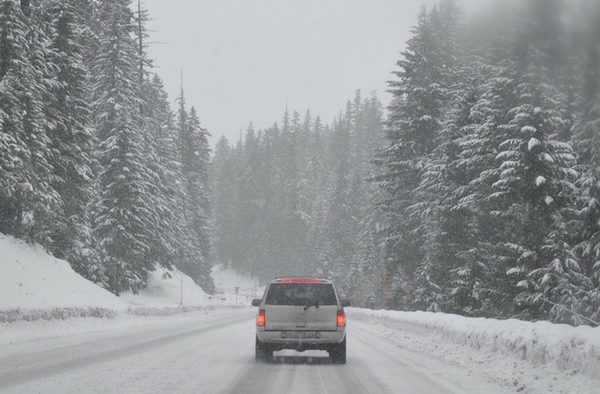MUCH MORE THAN SEASONAL TIRE CHANGES
According to the Ontario Ministry of Transport, in December 2015 there were 7271 more collisions than in May of the same year. In addition to traditional seasonal tire changes, drivers can adopt several precautionary measures to prepare their cars for our harsh winters.
Since 1947, the Speedy Glass team has seen it all. That’s why the team has assembled a few tips to help drivers prepare their cars for the winter months in order to cut down the risk of accidents.
This winter, safer is better
Before winter settles in, it is important to assess your vehicle to determine potential problem areas, while keeping an inventory of the necessary upgrades needed for your car to run smoothly and safely.
In addition to having the spark plugs, brakes, suspension and wheel alignment verified by a professional, don’t forget your headlights!
A driver with damaged headlights will on average lose four seconds of reaction time in an emergency situation. Properly-functioning headlights also allow you to see road signs from a distance of 115 meters compared to only 50 meters for damaged ones.
Collisions with animals on highways are on the rise. In fact, according to the most recent Statistics Canada data, accidents causing material damage have gone up 40 per cent in five years.
That additional distance could surely help a driver react better to that deer suddenly crossing the highway!
With over 20 million cars currently on Canadian roads, this type of accident could very well continue to rise.
Measures must also be taken to address chips in windshields. During winter, even the smallest chip can become a full-on crack due to contrast in temperatures, moving from -30 Celsius outdoors to 20 Celsius inside the vehicle. In addition to affecting a driver’s visibility, an improperly installed windshield can also decrease the windshield’s ability to withstand airbags in the case of a collision. Even worse, it may compromise the integrity of the car’s roof in case of a serious accident. Most insurance companies cover full cost of repairing cracks in your windshield. Neglecting to repair it makes it necessary to replace it. Also, the driver would be obliged to pay the value of his franchise in such a situation.
Snow and ice must be removed from the windshield and the wiper fluid reservoir must be well-filled. Nothing is more dangerous than reduced visibility due to winter precipitation and the accumulation of salt on your windshield. By virtue of The Highway Traffic Act, Section 74: “No person shall drive a motor vehicle upon a highway, unless the windshield and [all windows] afford the driver a clear view to the front, side [and rear] of the motor vehicle.” In such cases, a driver can receive a $110 ticket.
1. Tire Pressure
A vehicle’s tires must be filled adequately to offer the best-possible performance and grip on the road. Each time the temperature drops by 6 degrees Celsius, the tire pressure drops by one pound per square inch. Professionals thus suggest increasing the pressure of your tires from 2 to 4 pounds per square inch during winter.
2. Maximize Visibility
Few people know this, but windshield wiper manufacturers recommend they be replaced twice per year to ensure their efficiency. Anti-rain treatments are another way to ensure maximum visibility. This type of treatment is especially useful during the winter given the way ice can affect the windshield’s water repellent efficiency, making it easier to remove ice from a treated windshield.
3. Fuel
Driving low on fuel can be damaging to your vehicle in cold weather. Keeping a full tank decreases the risk of freezing any of the ducts. The trunk of your vehicle should also include a winter kit consisting of a minimum of a shovel, adhesion plaques, jumper cables, a thermal blanket and a flashlight which could prove to be essential in an emergency situation. A first aid kit is also good to have on hand.
4. Cabin Filter
Likely due to the fact that it has only been introduced in vehicles over the past decade, the cabin filter must be changed regularly. It plays a key role in your car’s air quality, especially during winter when humidity fluctuates greatly.
5. Carpets
When car carpets are soaked with melting snow, humidity in the vehicle can rise enough to lead to fogging. Quality rubber carpets, such as Weathertech MD3, allow for maximum protection and help avoid this problem.
6. Thermal Shock
The contrast in outside and inside temperatures greatly impact a vehicle’s windshield. A progressive warming up of the car helps avoid certain minor repairs to other parts of the car. Speedy Glass recommends a vehicle be warmed up for approximately three minutes before taking the road.
7. Battery
Cold temperatures can weaken your battery. Ask a professional to check for traces of corrosion to ensure worry-free starts. Also make sure your cables are firmly fastened.
8. Brakes
Avoid driving on icy roads with brakes that are not in perfect condition. Regular check-ups are essential.
9. Remote Car Starters
A remote car starter helps the driver avoid having to brave the cold while also allowing the car to gradually warm up. You can now even use your smartphone to save time.
10. Anti-freeze
Anti-freeze helps maintain the optimal temperature for a car to run smoothly. Professionals recommend a complete emptying of the cooling system on a regular basis.







